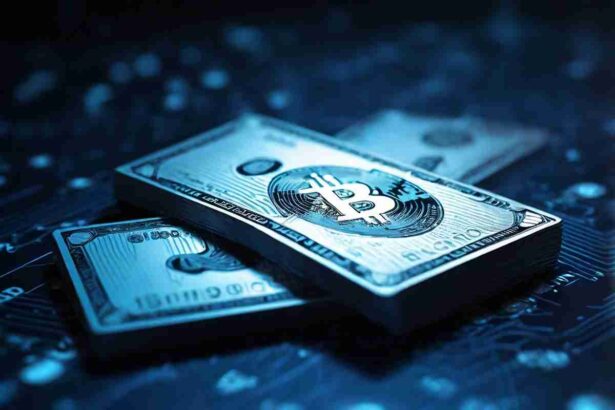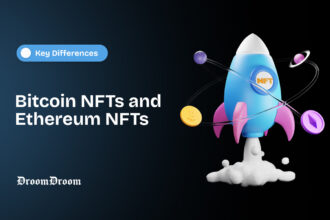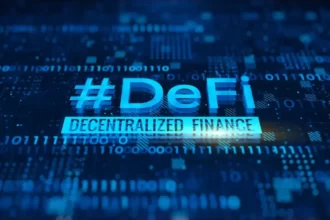Bitcoin, the first and largest cryptocurrency, has entered its 14th year of existence. Since its inception, the crypto landscape has evolved drastically with substantial growth. The growth of the altcoin sector has unearthed a plethora of use cases of the underlying technology behind cryptocurrencies, the blockchain, beyond the store of value or the medium of exchange narrative. One such use case is the NFT (Non-Fungible Token) revolution, a unique and innovative way to represent digital ownership.
Digital collectibles enthusiasts often associate NFTs with blockchains like Ethereum or Solana. Conversely, bitcoin has primarily remained the pioneer of peer-to-peer financial transactions. However, the launch of the ordinals protocol effectively brings on-chain NFTs to the bitcoin blockchain.
NFT revolution
Before delving into the ordinals protocol, which has sparked contentious debates within the bitcoin community, it is essential to address the overall NFT wave that has taken the world by storm. NFTs refer to unique digital assets stored on a blockchain. With the transparency and traceability brought by blockchain technology, NFTs represent proof of ownership of assets such as digital artwork, music, and videos.
The NFT market has seen exponential growth in recent years in blockchains like Ethereum. Furthermore, competitors like Solana have appeared as a legitimate blockchain that hosts a myriad of NFT marketplaces and projects.

Image via: The Block

The popularity of the NFT sector reached astronomical heights between 2021 and 2022 with the rise of picture-for-proof(PFP) projects like the Bored Ape Yacht Club and the resurgence of older PFP projects like Crypto Punks.
Since the bull market highs, however, interest in the NFT space has taken an evident setback. The noticeable decline in NFT trading volume across all chains can be attributed to the current crypto bear market and the bleak broader macroeconomic outlook.

However, the advent of the ordinals protocol, which brings on-chain NFTs to bitcoin, has rekindled interest in bitcoin’s development potential among the wider crypto community and NFT collectors.
The History of NFTs on Bitcoin
Ethereum, the second largest crypto by market cap, remains the dominant blockchain network for minting and trading NFTs. However, even before the inception of ethereum and NFTs coming to the spotlight, an ecosystem for verifiably unique digital assets was flourishing on bitcoin.
Early innovators creating novel approaches to using a local token for smart contracts on bitcoin included Layer 2 protocols Counterparty and Stacks. Digital collectibles utilize smart contracts to assign asset ownership and register any updates to the ownership when digital assets are bought or sold. Therefore, these protocols represented a monumental advancement in crypto history by showcasing that bitcoin’s design could be used for more than a medium of exchange or store of value.
The emergence of art collectibles like Spells of Genesis in 2015 and Rare Pepes in 2016 are often considered crucial precursors to the explosive growth of NFTs.
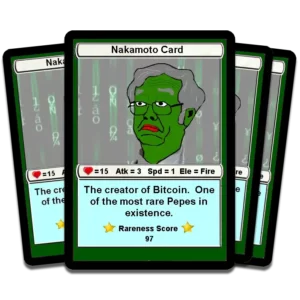
Despite the early implementation of digital collectibles on bitcoin via layer 2 protocols or sidechains, the adoption of NFTs on the largest cryptocurrency did not materialize as seen on other chains. This is a result of resistance from the bitcoin community with claims that this added functionality would bloat the blockchain, thereby complicating the intended use case of bitcoin for verifying financial transactions.
The purpose and exact utility of bitcoin is still a fiercely contested topic. While bitcoin maximalists insist that the sole purpose of bitcoin is to verify financial transactions, others see the development of NFTs on the blockchain as a positive step toward widespread adoption. More discussions have also been sparked by the re-emergence of email snapshots written by the late Hal Finney, a pioneer in the early days of bitcoin. His identity has also been the subject of theories, often considered to be Satoshi Nakamoto himself, the pseudonymous creator of the cryptocurrency.
Unpopular fact: Hal Finney saw Bitcoin NFTs as a way to get mainstream adoption pic.twitter.com/54BqZI627b
— trevor.btc (@TO) February 2, 2023
Understanding Bitcoin Ordinals
The ordinals protocol was officially launched on the bitcoin mainnet on the 21st of January 2023 by bitcoin core contributor and software engineer Casey Rodarmor following a blog post.
1 bitcoin is broken into 100 million units called satoshis or sats. The nascent ordinals protocol enables individuals who operate bitcoin nodes to directly inscribe each satoshi or sat with data without needing a separate sidechain or token. This inscribed data can include smart contracts, which in turn, enable the attachment of digital assets such as JPEGs, texts, and even video games to each sat. Therefore, the protocol effectively brings a novel way of creating bitcoin-native NFTs to the limelight.
Taproot and SegWit, two upgrades to the Bitcoin software that occurred in 2021 and 2017, respectively, are credited with the development of the ordinals protocol. These updates made it possible to store new metadata on the Bitcoin blockchain. The SegWit upgrade expanded bitcoin’s block size from 1 megabyte to 4 megabytes. Taproot brought smart contracts to the network while relaxing restrictions for data limits, allowing the entire 4-megabyte block to be inscribed with ordinal NFTs.
Ordinals are fundamentally different from most existing NFTs in that they are NFTs that can be directly minted onto the bitcoin blockchain. For instance, NFTs on ethereum or solana are not stored entirely on the blockchain. NFTs on these chains remain off-chain on an Interplanetary File System (IPFS). The smart contract’s creator can alter certain information about an NFT on these chains. For example, projects can update the metadata of specific NFTs to enhance the quality of the images.
In contrast, ordinals completely store the data for the digital asset on-chain as opposed to pointing to a server that hosts the data. As a result, ordinal inscriptions are effectively the most irreversible and permanent forms of NFTs. However, the immutable nature of digital content on bitcoin brought about by the ordinals protocol has led Rodarmor to view the term NFTs as “incomplete.” As a result, he refers to bitcoin ordinals as digital artifacts rather than NFTs.
The Growth of the Ordinals Protocol
The activity of these bitcoin digital artifacts introduced by the recently launched ordinals protocol is already making waves within the bitcoin community and broader crypto ecosystem. According to data from Dune, bitcoin inscriptions using ordinals have already crossed over 130,000 mints and rising, with image files being the most dominant digital medium.
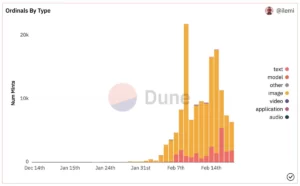

Furthermore, projects like ordinal punks, a derivative of the influential CryptoPunks NFT collection built on ethereum, are already significantly appreciating in value. This could be a result of the project being associated with the narrative of an early or pioneering project deployed on the protocol. Moreover, the scarce total supply of 100 ordinal punks is another influential factor causing the prices to rise. While it is not certain whether these early digital artifacts will remain valuable with more collections on the horizon, the current demand exhibits all signs of growth in the ordinals protocol.
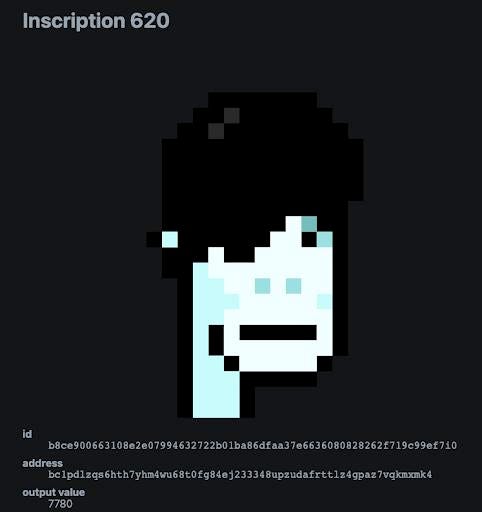

Divided Opinions
The growing popularity of the ordinals protocol brings new use cases to bitcoin. However, the inception of the ordinals protocol has become a divisive topic within the bitcoin community. This new development has ignited debates around the primary purpose of bitcoin.
Bitcoin purists view Radarmor’s innovation as drifting away from Satoshi’s vision of bitcoin and its ethos as a peer-to-peer cash system. Some perceive ordinal inscriptions as a trivial novelty that crowds block space and increases transaction costs for all users. Ultimately, those opposed to ordinals fear that adding digital artifacts or NFTs to the blockchain will endanger bitcoin’s sole use case of settling financial transactions.
Marginalized peoples in developing countries will have to pay more to run their Bitcoin nodes and send transactions because privileged wealthy whites want to put JPEG drawings on the blockchain as status symbols. Just because you can doesn’t mean you should.
— Bitcoin is Saving (@BitcoinIsSaving) January 29, 2023
So @adam3us invented hashcash as a spam prevention mechanism.
Then satoshi utilized this in #bitcoin to solve double spending.
And now folks waste precious blockspace by spamming jpegs?!
Why creating the #lightningnetwork in the first place if the base layer allows this shit?! https://t.co/okytBt1uof
— Rene Pickhardt (@renepickhardt) February 8, 2023
However, proponents of ordinals see the development as a way to both expand the user base and enable new functionalities for bitcoin. In addition, by leveraging the ordinal protocols’ permanence and immutability, supporters view the development as playing a crucial role in prompting a new generation of prolific artists and creators to adopt bitcoin.
Currently, the majority of miner revenue comes from block rewards, in which 6.25 BTC is rewarded to miners. These rewards are reduced by half every four years with the bitcoin halving. While this is not a cause for concern at the moment, the dwindling rewards over time could threaten the security model of bitcoin. Therefore, another compelling argument among supporters is that higher fees could lead to higher incentives for bitcoin miners to secure the network.
Furthermore, in terms of detracting from bitcoin’s ethos, supporters argue that the creation of ordinals conforms to bitcoin’s roots in libertarian principles of the free market whereby the market determines the best use of block space.
Why it's good:
– Brings more financial use cases to Bitcoin
– Drives more demand for block space (aka fees)
My take:
– If you pay a tx fee, it's not spam.
– Bitcoin is permissionless. Can't stop anyone from building it anyway.
— Dan Held (@danheld) January 29, 2023
From its inception people have been using Bitcoin as a free speech platform by permanently etching messages and images into it. Satoshi even inscribed this headline from the 2008 financial crisis into the genesis block. Ordinal inscriptions are as native to Bitcoin as BTC is. pic.twitter.com/B7tqvtFUvd
— Leonidas (@LeonidasNFT) February 13, 2023
Closing Thoughts
Currently, OTC (Over-the-Counter)and peer-to-peer trading are the only ways to buy and sell Ordinal NFTs. Acquiring bitcoin digital artifacts is a tedious and technical process that can be particularly difficult for newcomers to the crypto space. Finding ordinal projects requires individuals to connect with specific collection creators via the ordinals discord channel. Since there is a lack of a marketplace at the moment, individuals have to place a high degree of trust in these sellers. Therefore, individuals looking to participate must proceed with extreme caution.
A. There's no market so you have to rely on trust and scammers are everywhere B. Fomo is insane and people are asking stupid prices C. Receiving is hard, transferring is harder. Again this isn't like eth in the way that we're all used to… 5/
— Sean Bonner Ⓥ (@seanbonner) February 9, 2023
The infrastructure to create, store, and trade ordinal NFTs on bitcoin remains at a very early stage of development. However, certain platforms like Gamma are already making strides to enhance the simplicity and user experience for those looking to create bitcoin ordinal inscriptions. It is not beyond reason to expect more marketplaces and wallets to begin offering native support for ordinals very soon.
Additionally, the potential utilities of future ordinal projects remain to be seen. Only time will tell if use cases like artist royalties, as seen on ethereum-based NFTs, can be replicated on bitcoin. Nevertheless, the creation of the ordinals protocol sets a precedent for bitcoin to directly rival other established NFT blockchains. Ultimately, individuals may love or hate the novel concepts of integrating digital artifacts on Bitcoin. However, the potential impact of ordinals in bolstering bitcoin adoption and functionality cannot be ignored.
